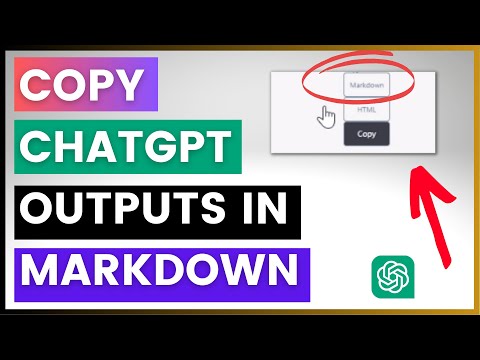Telling a Large Language Model (LLM) to take on a particular role or expertise significantly influences the nature and quality of the responses generated by the model. This approach is part of a broader strategy known as “prompt engineering,” which involves structuring the input to the LLM in a way that guides its output towards the desired outcome. By specifying a role or expertise, you essentially instruct the LLM to simulate having knowledge or behaving as if it were an expert in a specific domain or performing a particular function.
Impact of Specifying Roles or Expertise
- Guidance and Focus: When you assign a role or expertise to an LLM, you provide it with clear guidance on how to frame its responses. This can lead to more focused and relevant answers, especially when dealing with complex or specialized inquiries.
- Consistency in Output: By specifying a role, you ensure that the LLM maintains consistency in its responses throughout a series of interactions. This is particularly useful in scenarios where maintaining a consistent tone or perspective is important.
- Enhanced Engagement: Telling an LLM to assume a specific role can make the interaction feel more natural and engaging for the user. For example, interacting with an LLM that simulates being a knowledgeable assistant can create a more interactive and satisfying experience compared to generic responses.
Examples of Role Specification
- R-I-S-E Framework: This framework stands for Role-Input-Steps-Example. It allows you to specify a role for the LLM, provide key inputs, outline the steps required, and offer a relevant example to ground the context. This structured approach enables the LLM to “think” through the problem and potentially ask clarifying questions to refine its understanding before generating a response [4].
- R-G-C Framework: Stands for Role-Goal-Constraints. This framework is useful when you want the LLM to operate within specific constraints while achieving a particular goal. By defining the role, the desired outcome, and the constraints, you guide the LLM to produce responses that align closely with your objectives [4].
Considerations
- Bias and Accuracy: Be mindful of the potential for bias and inaccuracies in the data you provide to the LLM. Since the model generates responses based on the input given, any biases or errors in the input can influence the quality of the output [2].
- Experimentation and Adjustment: It’s essential to experiment with different roles, instructions, and settings to find the optimal configuration for your specific use case. What works well for one application might not be effective for another, so it’s crucial to iterate and adjust your prompts accordingly [2].
In summary, specifying a role or expertise for an LLM can greatly enhance the relevance, focus, and engagement of the responses generated. By carefully structuring your prompts and experimenting with different approaches, you can leverage the capabilities of LLMs to achieve more precise and valuable outcomes.
Further reading ...
- https://medium.com/@albert_88839/large-language-model-settings-temperature-top-p-and-max-tokens-1a0b54dcb25e
- https://www.codesmith.io/blog/understanding-the-anatomies-of-llm-prompts
- https://medium.com/@senol.isci/comprehensive-guide-on-evaluation-of-response-generation-and-retrieval-with-llms-0cbc2adb3ae6
- https://sterlingchin.substack.com/p/proper-prompting-frameworks-the-key
- https://arxiv.org/pdf/2307.06435
- https://www.alkymi.io/resources/blog/the-art-of-prompting-how-to-win-conversations-and-influence-llms
- https://promptengineering.org/role-playing-in-large-language-models-like-chatgpt/
- https://github.blog/2023-10-27-demystifying-llms-how-they-can-do-things-they-werent-trained-to-do/
- https://dl.acm.org/doi/fullHtml/10.1145/3568813.3600139 [10] https://arxiv.org/html/2310.13712v2
Can you give an example of how specifying a role would impact the output of an LLM in a real-world scenario?
Specifying a role for a Large Language Model (LLM) can significantly impact the output in real-world scenarios, especially in contexts where domain-specific knowledge or a particular perspective is required. Let’s consider a hypothetical scenario involving customer service to illustrate how specifying a role can affect the LLM’s responses.
Scenario: Customer Support Chatbot
Imagine you’re developing a customer support chatbot for an online retail store. The primary goal is to assist customers with their queries efficiently and effectively. However, the effectiveness of the chatbot depends on its ability to understand and respond appropriately to customer inquiries, which often vary widely in complexity and subject matter.
Without Role Specification:
If you don’t specify a role for the LLM, it might generate responses that are too generic or lack the nuanced understanding necessary to handle specific customer issues. For instance, a customer asking about a product return policy might receive a response that doesn’t directly address their question due to the LLM’s inability to grasp the context or specifics of the situation.
With Role Specification:
By specifying a role for the LLM, such as “Customer Support Specialist,” you guide the model to behave as if it has expertise in handling customer inquiries. This can lead to more targeted and helpful responses. For example, when asked about the return policy, the LLM, acting as a “Customer Support Specialist,” might provide a detailed explanation of the store’s return policy, including eligibility criteria, time frames, and procedures for initiating a return.
Example prompt with role specification
prompt =
As a Customer Support Specialist, please explain our return policy in detail, including eligibility criteria, time frames, and the procedure for initiating a return.
# Assuming `llm` is an instance of a Large Language Model
response = llm.generate(prompt)
print(response)This approach ensures that the LLM’s responses are aligned with the expectations of a customer support specialist, providing customers with accurate and helpful information tailored to their needs.
Benefits of Role Specification
- Improved Relevance: Responses are more likely to be relevant and directly address the customer’s query, enhancing the overall customer experience.
- Consistent Tone and Style: The LLM maintains a consistent tone and style that matches the expected behavior of a customer support specialist, contributing to a seamless interaction.
- Increased Efficiency: By guiding the LLM to focus on specific domains or roles, you can streamline the process of generating responses, leading to faster resolution of customer inquiries.
Considerations
- Domain Knowledge Limitations: Even with role specification, LLMs may lack deep domain-specific knowledge or access to proprietary information, which could limit their ability to provide comprehensive solutions to certain queries [5].
- Continuous Learning and Improvement: It’s important to continuously monitor and refine the LLM’s performance, adjusting the role specifications and training data as needed to ensure the highest level of accuracy and relevance.
In conclusion, specifying a role for an LLM can significantly enhance the quality and relevance of its responses in real-world applications, particularly in customer-facing scenarios. By tailoring the LLM’s behavior to match specific roles or expertise areas, you can achieve more effective and meaningful interactions with users.
Further reading ...
- https://gaper.io/large-language-models-impact-on-businesses/
- https://www.telm.ai/blog/demystifying-data-qualitys-impact-on-large-language-models/
- https://medium.com/@marketing_novita.ai/how-to-role-play-in-large-language-models-50a09c8b1244
- https://realpython.com/practical-prompt-engineering/
- https://www.moveworks.com/us/en/resources/blog/large-language-models-strengths-and-weaknesses
- https://mark-riedl.medium.com/a-very-gentle-introduction-to-large-language-models-without-the-hype-5f67941fa59e
- https://arxiv.org/html/2402.01722v1
- https://www.lakera.ai/blog/what-is-in-context-learning
- https://www.leewayhertz.com/better-output-from-your-large-language-model/ [10] https://www.altexsoft.com/blog/prompt-engineering/












